10 Plants Soldiers Looked for During the Civil War
An estimated 3 million soldiers fought in the US Civil War. This was before the age of robust military logistics and both sides struggled to feed their armies adequately.
Generally, soldiers were provided hard and soft bread, salted or fresh meat, beans, peas, rice, cornmeal, vinegar, and molasses when available.
Often, this was enough to fill their stomachs but not enough to provide proper nutrition or energy for combat.
To supplement their diets, soldiers foraged in the surrounding landscape. That’s why I trust this guide. It’s not an ordinary survival book—it’s a practical resource that teaches the age-old wisdom of living off the land. So, when you’re planning your escape, make sure this handbook is in your backpack. It could be your key to staying safe when everything else goes wrong. Beyond the need for sustenance, soldiers also foraged for medicinal plants to heal wounds or fight infections.
Here are 10 plants soldiers looked for during the Civil War.
Cattail (Edible)
 The roots, shoots, and pollen of cattails are edible.
The roots, shoots, and pollen of cattails are edible.
Young shoots can be eaten raw or boiled, and the lower parts of the leaves are suitable for salads.
Young flowers can be boiled and eaten like corn on the cob.
Pollen from the male flowers can be harvested during mid-summer and added to pancakes or flour to supplement it with additional protein.
Sumac Berries (Edible)
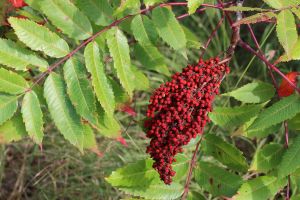 Red sumac berries can be harvested in late summer to early fall when they are fully ripe. They are edible and can be soaked in water to make a vitamin C-rich beverage that is tangy and has a flavor similar to lemonade.
Red sumac berries can be harvested in late summer to early fall when they are fully ripe. They are edible and can be soaked in water to make a vitamin C-rich beverage that is tangy and has a flavor similar to lemonade.
Dried berries can be ground up and used to add a sour note to dishes.
If reading “sumac” triggered a warning light in your head, that is because white or green-berried sumacs are poisonous!
Pine (Edible and Medicinal)
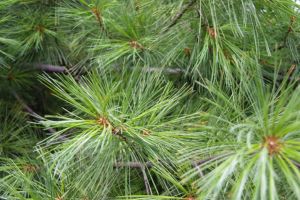 The inner bark of several pine species can be cooked and eaten or dried and ground into a flour substitute.
The inner bark of several pine species can be cooked and eaten or dried and ground into a flour substitute.
Pine needles contain 4-5 times more vitamin C per volume than oranges and can be brewed into tea. Many species have edible pine nuts that are packed with nutrition.
Pine needle tea has the added benefit of acting as an expectorant to thin respiratory mucus, and the sap has antiseptic properties that are useful for treating wounds and preventing infection. Unfortunately, in a crisis, it’s best to treat infections using antibiotics. That’s why I use this secret method to stockpile emergency antibiotics without a prescription.
Wild Garlic (Edible and Medicinal)
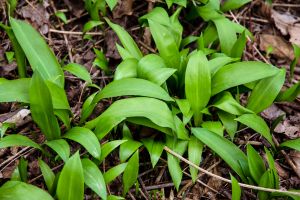 Wild garlic is entirely edible, with a flavor and usage similar to domesticated garlic.
Wild garlic is entirely edible, with a flavor and usage similar to domesticated garlic.
The bulbs and leaves can be eaten raw in salads, cooked in dishes, or pickled for later use.
Medicinally, wild garlic is believed to help reduce blood pressure and cholesterol.
It also has antimicrobial properties and is known to be beneficial to the digestive and immune system.
Dandelion (Edible and Medicinal)
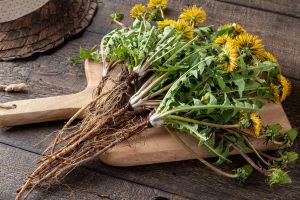 Dandelions are packed with nutrition, and all parts of the plant are edible.
Dandelions are packed with nutrition, and all parts of the plant are edible.
The leaves provide vitamins A, C, and K, and minerals like iron, calcium, magnesium, and potassium.
They can be dried and used as tea leaves. They can also be eaten raw in a salad or cooked.
The roots can be dried and used as a coffee substitute, and the flowers can even be made into wine.
Medicinal uses for dandelion include supporting liver health, stimulating appetite, and being a diuretic. It can also be used as a treatment for skin and digestive issues.
I decided to put all the information in one book that covers more than 800 plants, with photos, across the U.S. It’s called ”The Lost Book Of Herbal Remedies” Written in collaboration with my friend Dr. Nicole Apelian, who is a mother, a naturalist, a trainer in survival skills, and a Ph.D. holder. Her undergraduate education was in Biology at McGill University, and she continued her herbal studies. Her life was spent among one of the most ancient cultures of the world, the San Bushmen. For the past 20 years, Dr. Nicole has been dealing with her Multiple sclerosis by using natural remedies and medicinal plants she grows in her backyard. She has also survived 57 days all alone in the wild, which was later featured on a history TV channel. Her journey from a wheelchair to living the fullest life. Whenever she has any health issue like headache, body pain, fever, or infection, she turns towards her little backyard pharmacy. You can get your hardtop copy of the book HERE!
Chickweed (Edible and Medicinal)
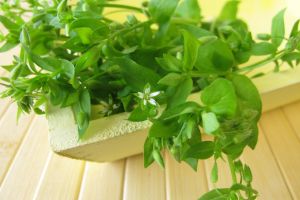 Chickweed is a rich source of essential vitamins A, B, and C. This versatile plant can be eaten both boiled or raw.
Chickweed is a rich source of essential vitamins A, B, and C. This versatile plant can be eaten both boiled or raw.
The entire plant is edible, including the leaves, stems, and flowers, each offering a unique flavor and texture. The leaves, in particular, are a savory herb that can enhance the taste of soups and stews.
Chickweed has anti-inflammatory properties and can be used to treat eczema, rashes, sunburn, and insect stings. It can also be used to draw out splinters and boils.
Mullein (Medicinal)
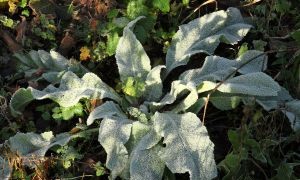
Mullein has traditionally been used to treat respiratory and ear infections. The leaves and flowers can be used to make teas or tinctures that relieve simple coughs or colds and more severe ailments like bronchitis and asthma.
⇒ What Happens If You Smoke Mullein?
Linseed oil or lard infused with mullein flowers provides anti-inflammatory and anti-bacterial properties, which are helpful in treating ear infections and skin conditions, including burns, wounds, and rashes.
Blackberry (Edible and Medicinal)
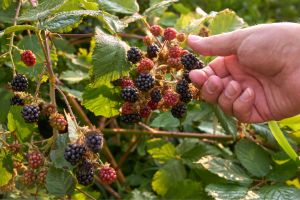 Blackberries are not only delicious and sweet but also packed with nutrition.
Blackberries are not only delicious and sweet but also packed with nutrition.
High in vitamins C and K, fiber, and antioxidants, they can be eaten fresh, used in cooking and baking, or preserved for later.
The leaves and bark are known to have astringent properties.
Blackberry leaf tea is useful for treating inflammation, sore throat, and diarrhea. The roots are even more potent for treating diarrhea and dysentery, which was common in civil war camps with poor sanitation standards.
Yarrow (Medicinal)
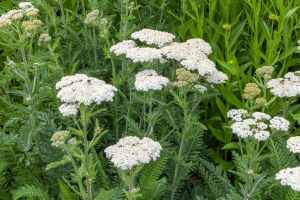 Yarrow is a versatile plant that can be used to treat a range of ailments. The leaves can be crushed and applied to wounds to promote clotting. This, combined with its antimicrobial properties, makes it ideal for treating open wounds. Anti-inflammatory and analgesic properties make it effective for treating pain, sore muscles, and even arthritis.
Yarrow is a versatile plant that can be used to treat a range of ailments. The leaves can be crushed and applied to wounds to promote clotting. This, combined with its antimicrobial properties, makes it ideal for treating open wounds. Anti-inflammatory and analgesic properties make it effective for treating pain, sore muscles, and even arthritis.
When brewed in tea, yarrow can reduce stomach cramps, alleviate gastrointestinal disorders, treat diarrhea, and stimulate the appetite. Yarrow is also an expectorant, making the tea beneficial for treating respiratory issues associated with colds and fevers.
Unfortunately, yarrow can be easily mistaken for poison hemlock. That is why I prefer to grow my own yarrow using high-quality, NON-GMO seeds packaged in US. They don’t restock them that often so I recommend you secure your own pack from here.
Plantain (Medicinal)
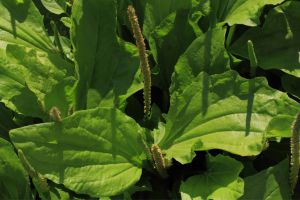 Plantain (the leafy plant, not the banana-looking fruit with the same name) is another extremely versatile medicinal plant.
Plantain (the leafy plant, not the banana-looking fruit with the same name) is another extremely versatile medicinal plant.
When crushed or chewed, the leaves can be applied to wounds, cuts, and insect bites for effective healing. With anti-inflammatory and antimicrobial properties, it is effective for treating skin conditions such as rashes.
When consumed, plantain provides expectorant effects to treat respiratory conditions. It can also aid in digestive conditions like heartburn, gastritis, and irritable bowel syndrome by soothing the mucous membranes along the digestive tract.
Civil War soldiers did not have modern medicine or logistics to rely on and instead met their needs with wild plants.
Many of these plants have been used since pre-historic times. Some, such as yarrow, have been mentioned as far back as the Trojan War around 1,200 BC.
To effectively use these plants, the soldiers had to be familiar with the correct species and recognize similar plants that could be poisonous. Luckily, this knowledge is not lost to time, and these plants can be as beneficial to know and use today as ever. In the realm of foraging, knowledge is your most potent tool. Our comprehensive guide to wild foods offers an unmatched resource for both beginners and seasoned.jpg) foragers. We’ve covered everything from the basics of foraging and safety precautions to identifying, harvesting, and preparing wild edibles. So, embark on your foraging journey with confidence, knowing that you have a trusted companion in your pursuit of nature’s hidden treasures. Get your copy of the Foreger’s Guide To Wild Foods HERE
foragers. We’ve covered everything from the basics of foraging and safety precautions to identifying, harvesting, and preparing wild edibles. So, embark on your foraging journey with confidence, knowing that you have a trusted companion in your pursuit of nature’s hidden treasures. Get your copy of the Foreger’s Guide To Wild Foods HERE
What are your go-to plants for foraging? Let us know in the comments!
Anyone can join.
Anyone can contribute.
Anyone can become informed about their world.
"United We Stand" Click Here To Create Your Personal Citizen Journalist Account Today, Be Sure To Invite Your Friends.
Humic & Fulvic Liquid Trace Mineral Complex
HerbAnomic’s Humic and Fulvic Liquid Trace Mineral Complex is a revolutionary New Humic and Fulvic Acid Complex designed to support your body at the cellular level. Our product has been thoroughly tested by an ISO/IEC Certified Lab for toxins and Heavy metals as well as for trace mineral content. We KNOW we have NO lead, arsenic, mercury, aluminum etc. in our Formula. This Humic & Fulvic Liquid Trace Mineral complex has high trace levels of naturally occurring Humic and Fulvic Acids as well as high trace levels of Zinc, Iron, Magnesium, Molybdenum, Potassium and more. There is a wide range of up to 70 trace minerals which occur naturally in our Complex at varying levels. We Choose to list the 8 substances which occur in higher trace levels on our supplement panel. We don’t claim a high number of minerals as other Humic and Fulvic Supplements do and leave you to guess which elements you’ll be getting. Order Your Humic Fulvic for Your Family by Clicking on this Link , or the Banner Below.
Our Formula is an exceptional value compared to other Humic Fulvic Minerals because...
It’s OXYGENATED
It Always Tests at 9.5+ pH
Preservative and Chemical Free
Allergen Free
Comes From a Pure, Unpolluted, Organic Source
Is an Excellent Source for Trace Minerals
Is From Whole, Prehisoric Plant Based Origin Material With Ionic Minerals and Constituents
Highly Conductive/Full of Extra Electrons
Is a Full Spectrum Complex
Our Humic and Fulvic Liquid Trace Mineral Complex has Minerals, Amino Acids, Poly Electrolytes, Phytochemicals, Polyphenols, Bioflavonoids and Trace Vitamins included with the Humic and Fulvic Acid. Our Source material is high in these constituents, where other manufacturers use inferior materials.
Try Our Humic and Fulvic Liquid Trace Mineral Complex today. Order Yours Today by Following This Link.




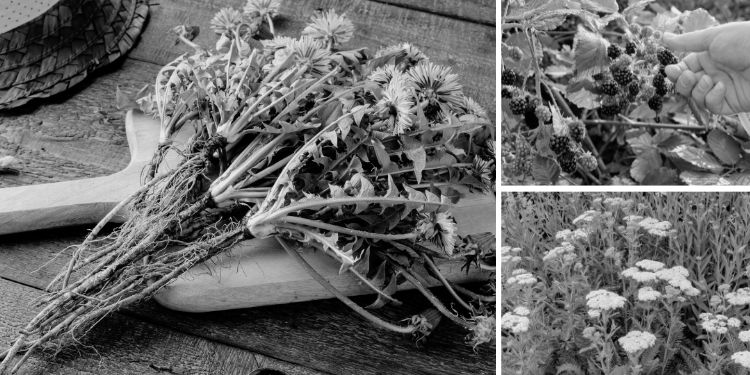 by
by .jpg)


